(306) I met Loyal Dog, Taro
文字数 3,991文字
On the same day that I enjoyed viewing the Kawazu zakura blossoms at Ibaraki Flower Park (Episode 287), I met the faithful dog "Taro" at the plaza in front of Ishioka Station.
Speaking of a loyal dog, you may know “Hachiko (忠犬ハチ公)”, a loyal dog near Shibuya Station, right? Hachiko went to Shibuya Station with his owner to see him off every day. He continued to walk to the station every day for 10 years even after his owner died.
Moreover, at the end of this chapter, Dad posted a photo of “Greyfriars Bobby”, a famous British faithful dog that he took 14 years ago. Bobby continued to live by his owner's grave for 14 years after his owner’s death.
“Taro” continued to go to Ishioka Station to meet his owner for 17 years after being separated from his owner. Taro lived a long life, so he may be a record holder for loyal dogs.
The story of the faithful dog "Taro" is as follows:
In 1964, 5-year-old Ryoko, who lived in Tamatsukuri-machi, took the Kashima Railway from Tamatsukuri-machi Station to Ishioka Station to go to a kindergarten in Ishioka City. It was her dog, “Koro”'s daily routine to see Ryoko off from her home to Tamatsukuri-machi Station.
One day, Koro got on the Kashima Railway at Tamatsukuri-machi Station and got separated from Ryoko at Ishioka Station.
Ryoko's father looked for Koro around Ishioka Station. There were reports that someone saw Koro, but Ryoko never saw Koro hereafter.
The fact is that Koro wandered into Ishioka Higashi Elementary School, which was located on the opposite side of the kindergarten which Ryoko went to and became a pet under the name of “Taro”.
Taro welcomed school children at the school gate every morning. After the children entered school buildings, Taro went to Ishioka Station, about 2 km away, and waited for his owner.
During the daytime, Taro would play with the children at school, but in the evening, he would go to Ishioka Station and wait for his owner. This continued for 17 years until the day before Taro died in 1981.
There was no pet cemetery in Ishioka City, so Taro was buried in a pet cemetery in Otto, Tsuchiura City. Currently, this place is not managed as a cemetery.
In May 2009, Ryoko found an article in a newspaper about a dog named “Taro” that wandered into an elementary school. The article coincided with the date of her separation from Koro. When Ryoko asked the principal of the elementary school at the time, the photograph of Taro she saw was Koro. It had been 45 years since they were separated.
Local volunteers raised money to build a statue to tell this story to future generations. Juichi Hirata, a sculptor who lived in Ishioka City, created a bronze statue of Taro with children on both sides. The statue was named "Minna no Taro (Everyone’s Dear Taro)" and was installed in front of the west exit of Ishioka Station, and an unveiling ceremony was held on April 14, 2017.
Taro's story has also been featured on TV, such as "Shimura Animal Garden".
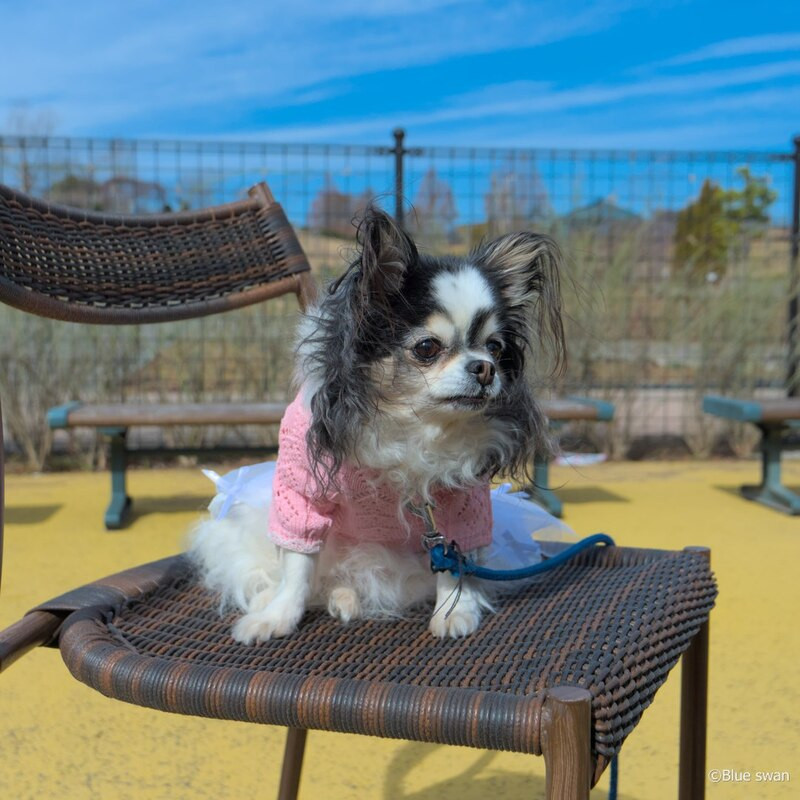
①I’m taking a rest after seeing the Kawazu zakura at Ibaraki Flower Park.
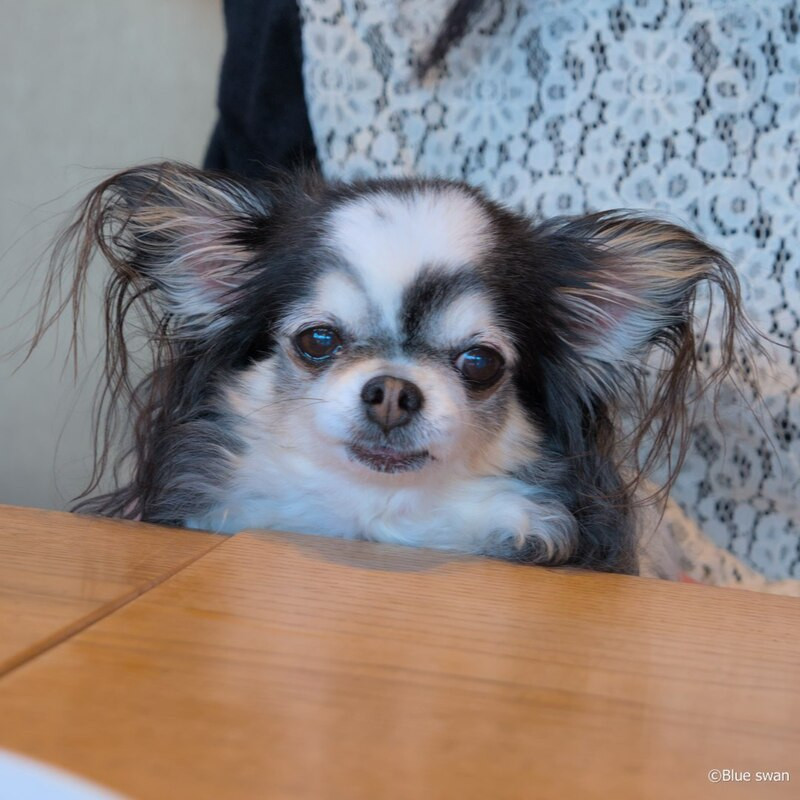
②This is the restaurant where I had lunch. Now, I'm going to meet Taro.
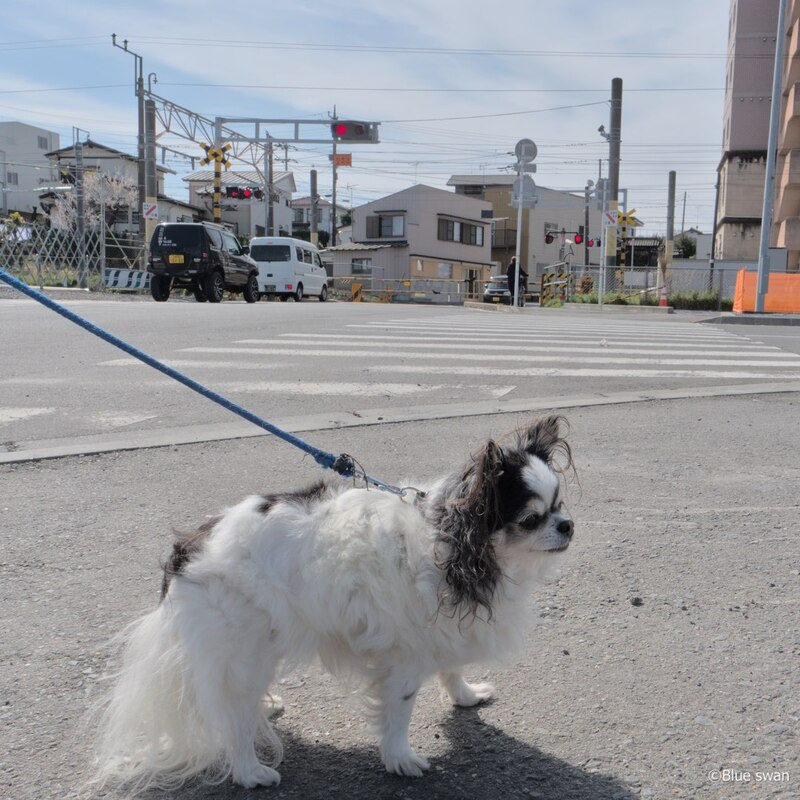
③ I came near Ishioka Station. This is the road that Taro commuted.
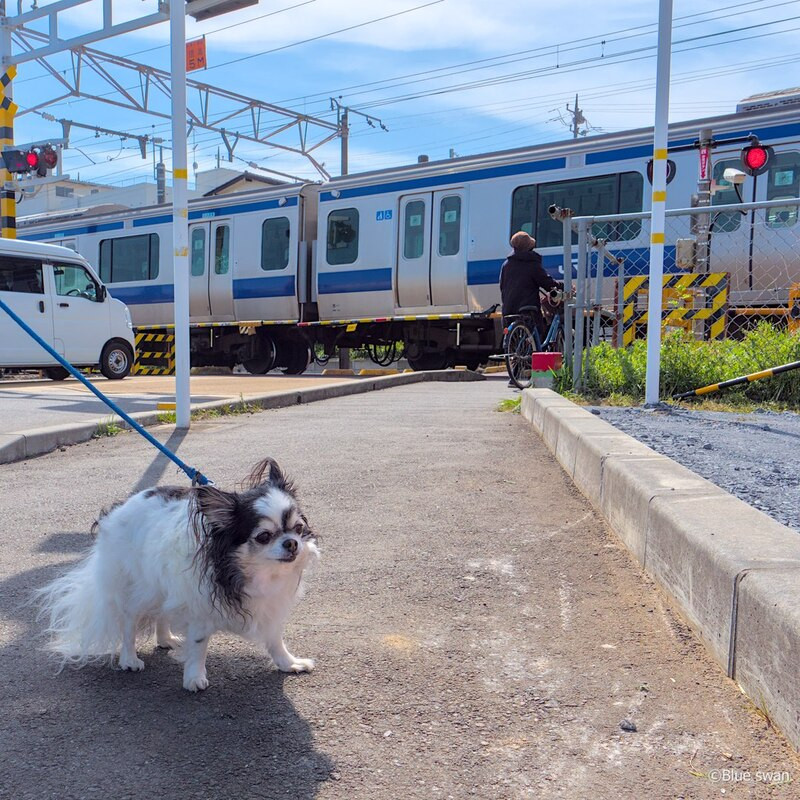
④ A train came to the railroad crossing that Taro passed through.
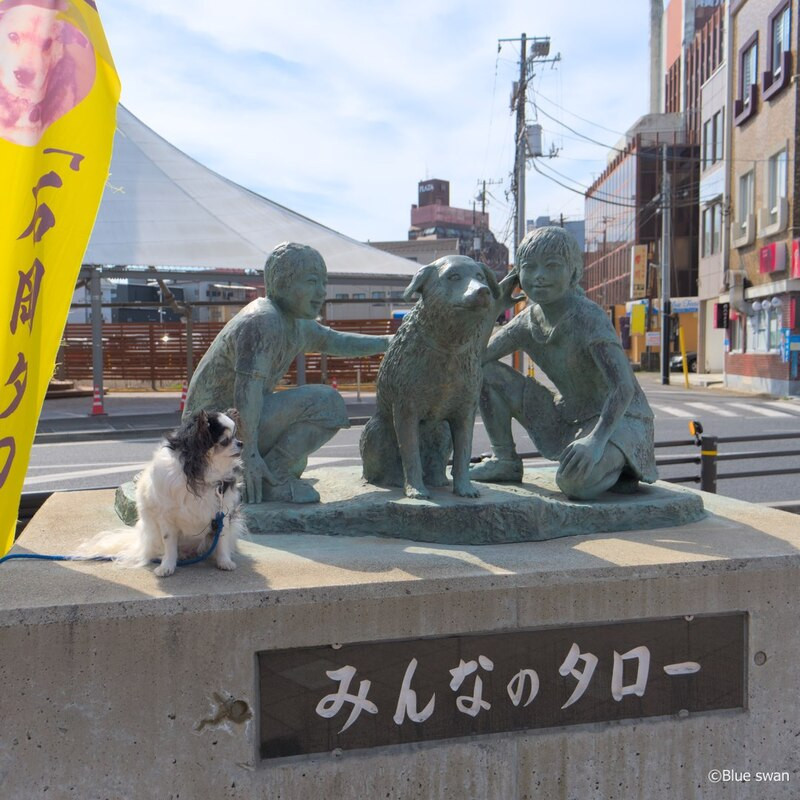
⑤ After crossing the railroad crossing, there was a bronze statue of "Minna no Taro".
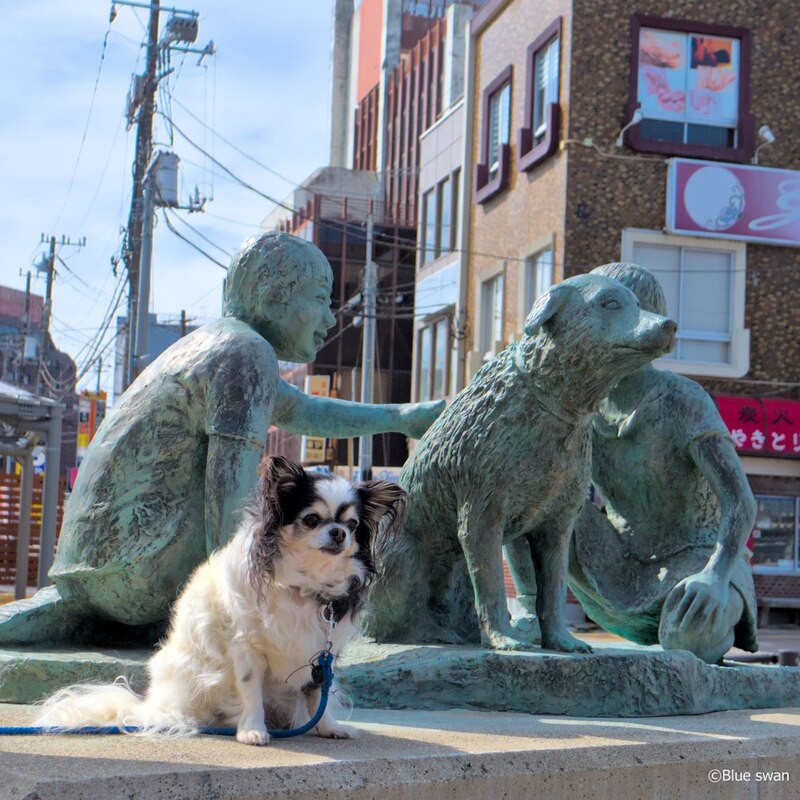
⑥ This is a close-up photo of the statue.

⑦This is an explanation board of Taro on the second floor of Ishioka Station.
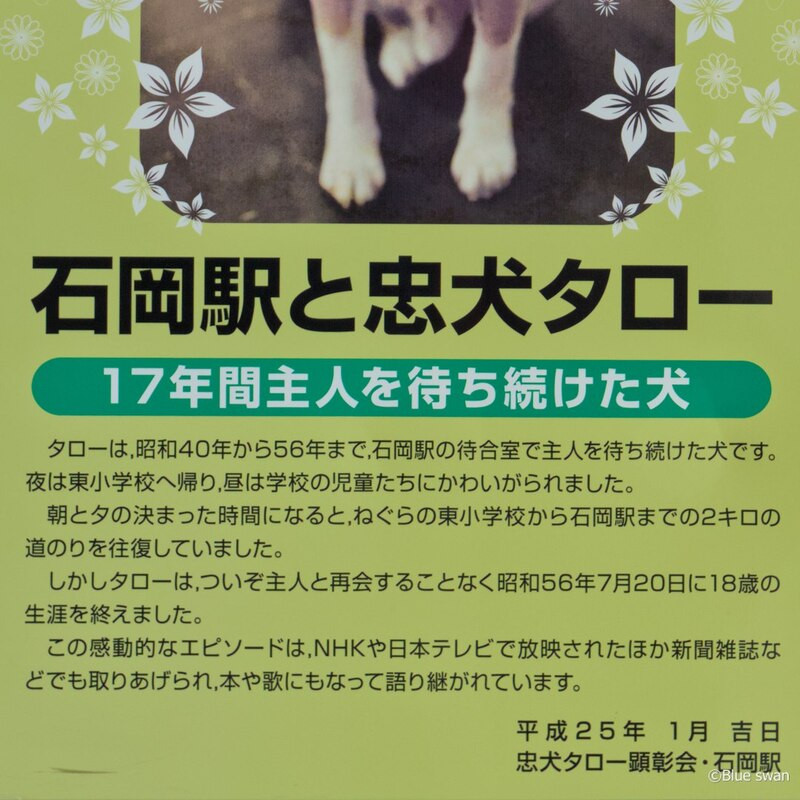
⑧ Dad uploaded only the description.
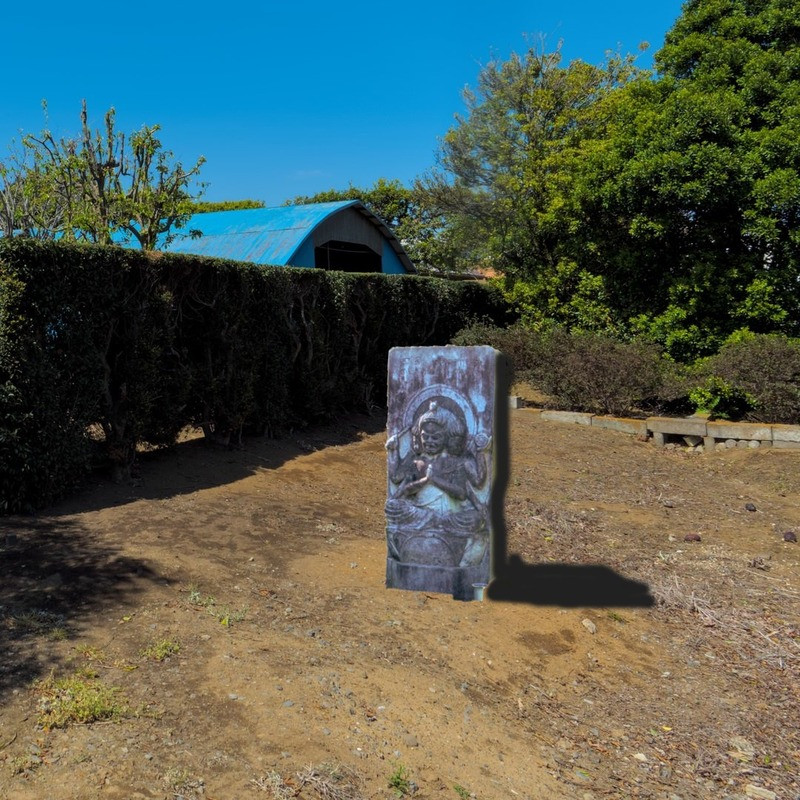
⑨ This is a former pet cemetery located in Otto, Tsuchiura City, where Taro's grave is said to be. There is no Bato Kannon grave marker that once existed. I felt sorry for Taro, so I asked Dad to photoshop in a proper grave.
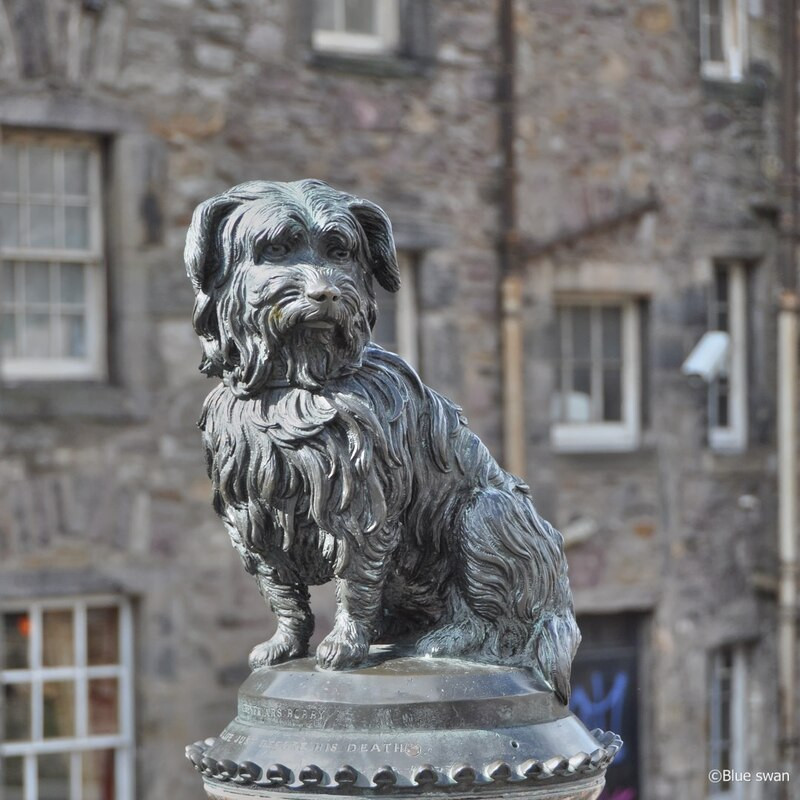
⑩ This is a bronze statue of Bobby made in 1872 in the UK.
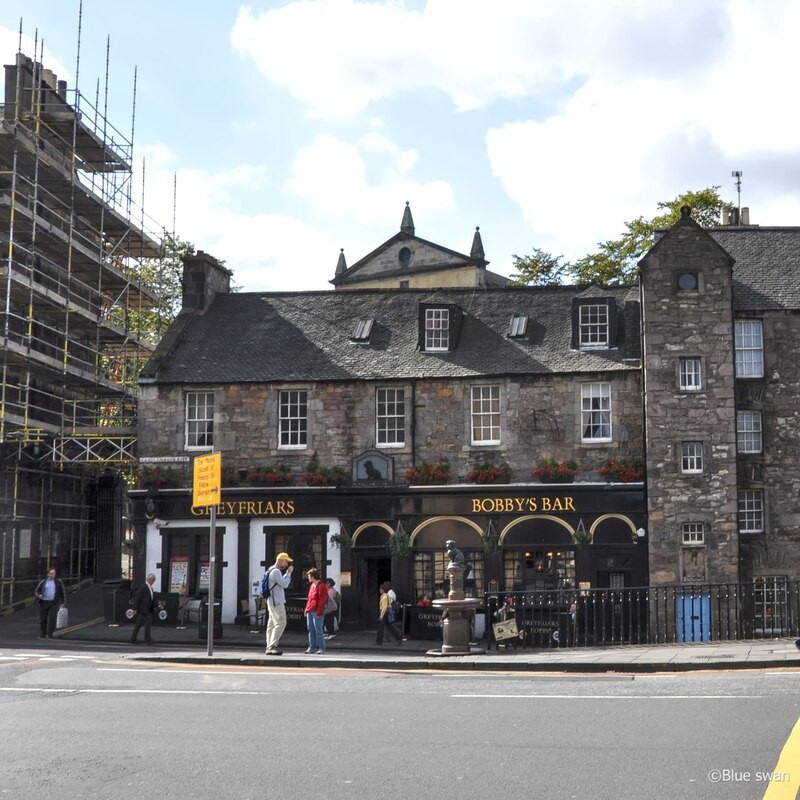
⑪ This is “Bobby's Bar” where Bobby used to eat. Above the building you can see the roof of Greyfriars Church. If you take the path to the left, you’ll enter the cemetery.
Speaking of a loyal dog, you may know “Hachiko (忠犬ハチ公)”, a loyal dog near Shibuya Station, right? Hachiko went to Shibuya Station with his owner to see him off every day. He continued to walk to the station every day for 10 years even after his owner died.
Moreover, at the end of this chapter, Dad posted a photo of “Greyfriars Bobby”, a famous British faithful dog that he took 14 years ago. Bobby continued to live by his owner's grave for 14 years after his owner’s death.
“Taro” continued to go to Ishioka Station to meet his owner for 17 years after being separated from his owner. Taro lived a long life, so he may be a record holder for loyal dogs.
The story of the faithful dog "Taro" is as follows:
In 1964, 5-year-old Ryoko, who lived in Tamatsukuri-machi, took the Kashima Railway from Tamatsukuri-machi Station to Ishioka Station to go to a kindergarten in Ishioka City. It was her dog, “Koro”'s daily routine to see Ryoko off from her home to Tamatsukuri-machi Station.
One day, Koro got on the Kashima Railway at Tamatsukuri-machi Station and got separated from Ryoko at Ishioka Station.
Ryoko's father looked for Koro around Ishioka Station. There were reports that someone saw Koro, but Ryoko never saw Koro hereafter.
The fact is that Koro wandered into Ishioka Higashi Elementary School, which was located on the opposite side of the kindergarten which Ryoko went to and became a pet under the name of “Taro”.
Taro welcomed school children at the school gate every morning. After the children entered school buildings, Taro went to Ishioka Station, about 2 km away, and waited for his owner.
During the daytime, Taro would play with the children at school, but in the evening, he would go to Ishioka Station and wait for his owner. This continued for 17 years until the day before Taro died in 1981.
There was no pet cemetery in Ishioka City, so Taro was buried in a pet cemetery in Otto, Tsuchiura City. Currently, this place is not managed as a cemetery.
In May 2009, Ryoko found an article in a newspaper about a dog named “Taro” that wandered into an elementary school. The article coincided with the date of her separation from Koro. When Ryoko asked the principal of the elementary school at the time, the photograph of Taro she saw was Koro. It had been 45 years since they were separated.
Local volunteers raised money to build a statue to tell this story to future generations. Juichi Hirata, a sculptor who lived in Ishioka City, created a bronze statue of Taro with children on both sides. The statue was named "Minna no Taro (Everyone’s Dear Taro)" and was installed in front of the west exit of Ishioka Station, and an unveiling ceremony was held on April 14, 2017.
Taro's story has also been featured on TV, such as "Shimura Animal Garden".

①I’m taking a rest after seeing the Kawazu zakura at Ibaraki Flower Park.

②This is the restaurant where I had lunch. Now, I'm going to meet Taro.

③ I came near Ishioka Station. This is the road that Taro commuted.

④ A train came to the railroad crossing that Taro passed through.

⑤ After crossing the railroad crossing, there was a bronze statue of "Minna no Taro".

⑥ This is a close-up photo of the statue.

⑦This is an explanation board of Taro on the second floor of Ishioka Station.

⑧ Dad uploaded only the description.

⑨ This is a former pet cemetery located in Otto, Tsuchiura City, where Taro's grave is said to be. There is no Bato Kannon grave marker that once existed. I felt sorry for Taro, so I asked Dad to photoshop in a proper grave.

⑩ This is a bronze statue of Bobby made in 1872 in the UK.

⑪ This is “Bobby's Bar” where Bobby used to eat. Above the building you can see the roof of Greyfriars Church. If you take the path to the left, you’ll enter the cemetery.
